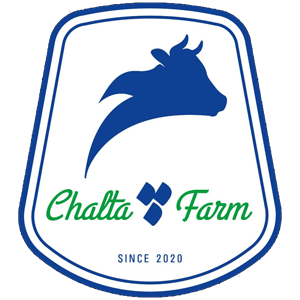Dry Milk Protein
Non-fat dry milk is one of the High Protein Products, so in addition to structural parameters such as grain size, solubility and temperature given during the process, as well as microbial parameters, the amount of protein in this product is of special importance that can somehow play the most important role in the biological value and final price of the product. The minimum amount of protein in the non-fat dry matter of this product is 31% according to the National Standard of Iran No. (2012). In this short article, we try to explain using experimental data as well as mathematical equations that the minimum protein in the dry matter of non-fat dry milk should be at least 33% according to the milk produced in Iran in industrial and semi-industrial farms; therefore, consumers of dry milk should not accept numbers lower than this number from suppliers.
According to the studies of the input milks to Kesht Sanat Damparvari Shameh Shir, the Weighted average of non-fat dry matter of the inputs to this factory during the last year was 8.49±0.52 % and the average protein was 3.07±0.21 %. In addition, in another study on 231 thousand of shipments of milk entering one of the factories of the country, the average non-fat dry matter was 8.0 ± 27.48 % and the average protein was reported 3.0 ± 55.19 %.
According to the above data representing the approximate amount of non-fat dry matter and milk protein in Iran, and considering an average of 3% to 5% of non-fat dry matter in cream, which will be deducted from the non-fat dry matter of milk (the upper limit is considered), if the average non-fat dry matter is considered to be 8.2% and the protein content is to be 3%, the total protein content of dry milk (not in non-fat dry matter) will be at least 33%; considering the humidity between 3 to 5% in the dry milk produced with the lowest state, the amount of protein in the dry matter of non-fat dry milk should be at least 34%.
In cases where the amount of protein and non-fat dry matter in milk is higher than the standard set in Iran, for example, if the amount of non-fat dry matter in milk is 8.7 and its protein is 3.2%, and even the amount of input non-fat dry matter to cream is 3 to 5%, the amount of protein in the dry matter in non-fat dry milk, if the humidity is between 3 to 5%, with the minimum state, is at least 35%.
Now consider a weak milk that the amount of protein and non-fat dry matter is 2.8 and 8%, respectively, in this case, taking into account 3 to 5% of non-fat dry matter entering the cream and 3 to 5% of moisture in dry milk, in the lowest state, the protein in the non-fat dry matter of dry milk is 33.5.
The question may be asked why, despite the large changes in the amount of non-fat dry matter and raw milk protein, the rate of change in dry milk protein is not high? The reason can be attributed to the conversion factor, so that when the amount of non-fat dry matter followed by raw milk protein is high, the conversion factor of raw milk to dry milk decreases, in other words, one kilogram of powdered milk is produced from a smaller amount of raw milk, as a result of which the amount of dry milk protein is somewhat higher; and when input raw milk is low, i.e. non-fat dry matter and protein is very low, more raw milk is needed to produce one kilogram of dry milk, as a result, raw milk protein will be multiplied by a larger coefficient, and thus the protein in the non-fat dry matter of dry milk is always between 33 and 36% (If the milk powder is between 3 to 5 percent in terms of moisture content).
It should be noted that in this study and in all cases, the minimum conditions in favor of reducing the amount of protein in dry milk are considered to calculate the minimum amount of protein in the non-fat dry matter produced in milk powder.

